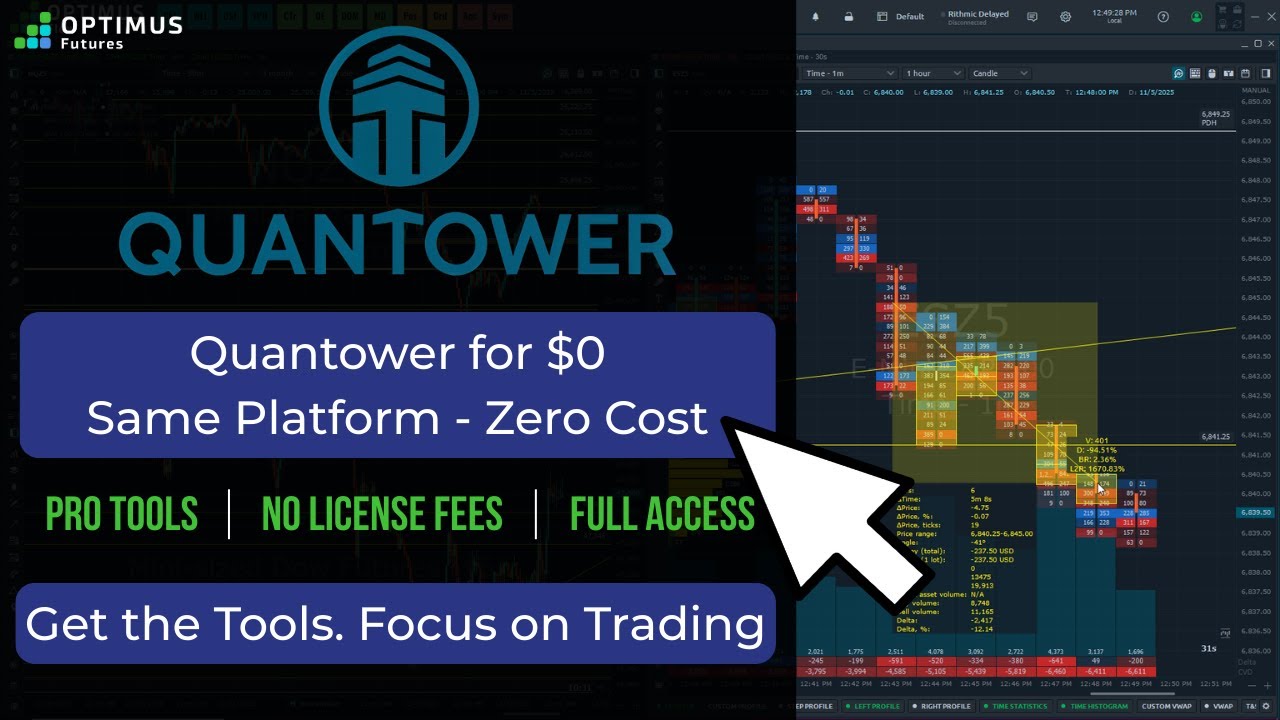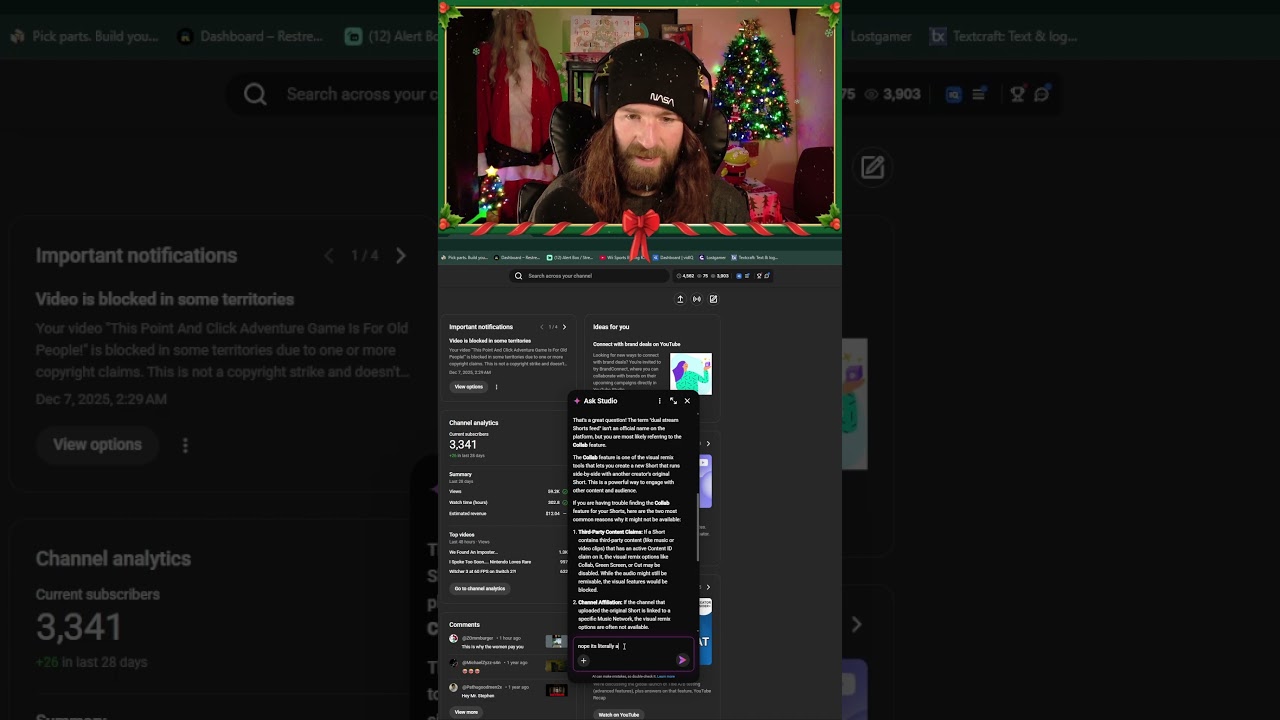The following article on Level II Market Data is the opinion of Optimus Futures.
Are you trying to switch to DOM trading? Do you wish to use the data on the DOM to complement your futures trading on the charts? This article will explain the hidden details behind the flashing numbers that you see on your DOM. Read on to get a better understanding of the Level II data and learn a simple strategy on how to read level II data in order to identify market direction.
What is Level II Market Data?
First, let’s go over what we call Level I. At its core, Level I displays the best bid-offer-volume quotes in real-time. Some call it Top of Book. On the other hand, Level II, also known as Order Book or Market Depth, displays all Limit Orders that have been sent to the exchange. Limit orders are orders to buy or sell a futures contract at a specific price. When you enter a limit order, your order gets placed in a queue behind all the other limit orders entered at that price. The DOM shows each possible price, and how many limit buy or sell orders have been placed at that price.
Trading in The Pit
Now before we dig deeper into Level II market data, let’s quickly look back at how pit traders used similar data (albeit in an entirely different form) to make buy or sell decisions. Before everything went electronic, trading was done through open outcry. Business was carried out in person with thousands of traders shouting orders at each other across a pit. With no online trading, large traders off the floor had to call in their orders by phone. A trader would then take the order down to the pit to get it filled.
Observant traders in the pit were familiar with who worked for large institutions and would notice when those traders picked up the phone. Knowing that an order was coming to the market, they would try to outrun the incoming order. In a flurry of activity, traders would take positions speculating on whether the incoming order was a buy or a sell. The pit would instantly be filled by the deafening noise of open outcry trading.
Unfortunately, most traders these days will never get to experience such a spectacle. Most trading pits closed years ago. New entrants to the market usually only know the market through a computer screen. Instead of seeing other traders scramble to get in positions, we see numbers change on a screen. It’s a different form of trading, and many pit traders had a difficult time moving over to electronic trading. Such traders relied on the ability to see and hear other traders to get a read on the market. In electronic trading we can’t see or hear the people we are trading with. However, that does not leave the independent trader without any tools to judge the markets.
Open Outcry in Online Trading
Electronic trading gives us a different tool to use to our advantage. Computers allow us to quickly see and analyze every order placed. We can instantly get a full view of what’s going on in the market. The ability to analyze orders with software can be extremely powerful. In the pit, traders had to add up numbers in their head to determine how many contracts were being traded. With computers, we can now quantify and categorize such orders by their different properties far faster than any human brain.
Level II Data and the DOM
So, this brings us back our main topic – Level II data. As mentioned, Level II data gives us information about limit orders.
For instance, there are currently 2000 lots in the queue to sell at 10. If you enter a limit order to sell at 10, you are placed in the queue, and a Level II update is sent out to reflect that there are now 2001 lots in queue to sell at 10. If you cancel that order another update would be sent to show that there are now 2000 lots in the queue again. Now it may seem silly to notify everyone of a one lot change, but a lot of Level II updates sent out by your data provider are just that. Updates of one lot in a queue of thousands.
Your lot will then sit in the queue until it is either canceled or filled by market orders. Market orders are orders to buy or sell at the best available price. These orders are for when a trader wants to enter a position right away. These market orders are immediately matched up with limit orders in the queue. A market buy will be matched up with someone else’s limit sell at the best available price, which we call the best offer. On the other side market sells will be matched up with a limit buy, which we call the best bid.
This information is typically reflected on the DOM in futures trading platforms. The DOM shows each possible price, and how many limit buy or sell orders have been placed at that price. When a level II update is received, you can tell how many orders are in the queue at a specific price, and the DOM is updated accordingly. However, it is important to realize that this is just one way of organizing the data because it’s useful for traders to execute with.
You can see every price and can simply click on the price you want to get in at. You can quickly see how many orders are already in the queue and can judge if you can get filled. If you think there’s a good chance of getting filled in the queue, you might try a limit order. If you’re worried about getting left behind, you might use a market order.
However, there’s plenty of other ways the information from level II updates can be organized. It can quickly get overwhelming when you start to look at the different possibilities. You can group the updates by whether they are for buy or sell orders. You can group the updates by whether orders are being added or canceled. You can group the updates by how far away from the best bid/ask they are. You can group the updates by how many lots were added/removed. You can also filter the updates by combinations of these properties.
Maybe you only want to analyze orders that are changes of 400 lots or more, and only within 4 price levels of the current bid/ask. That’s a lot of ways to slice the data, and all that information can potentially matter in specific situations. To make matters worse, a lot of the information can just be noise!
Analyzing Level II Data for Market Direction
Which leads us to the great challenge of trying to read level II and order flow in general. How do you tackle this huge bundle of information? It’s more information than any one person could ever hope to analyze. Many suggest just watching the DOM for hours and years until you finally see something. That’s certainly one way to tackle the problem, but perhaps we’re making things too complicated by caring about every tiny detail? It’s easy to miss the forest from the trees if you’re trying to catalogue every leaf.
A good starting point should be simple. So instead of parsing out this data every which way, let’s analyze it in the simplest way possible. What is the total number of level II updates for a given timeframe? Every time an update is sent out, even if it’s just spam from a robot, it signifies an action by a market participant. They took that action because they had an interest in interacting with the market at that time.
By monitoring how many changes we are seeing at any given time we can get an idea of how interested the market is in the current action. Think of it like listening to a rainstorm. You can’t hear every individual raindrop, but you can still hear all the drops together to signal how hard it is raining. It’s the same strategy that traders in the pit would use. Just like pit traders could judge the market by how loud the pit was becoming, we can look at the amount of level II updates being received. We’re simply looking at how much the DOM is flickering.
In a quiet market where traders don’t have much reason to trade, you might not see as much level II activity. Traders don’t have much of a reason to trade if they’re in the market at all that day, and so we don’t get as many order changes. Other days you might notice more level II activity than usual. More traders are placing orders, and that provides opportunity. You can also watch as the market interest change as price changes. As price moves up, you might see an increase or decrease in level II activity indicating a change in market sentiment due to the price movement. On a trend day you might notice more interest when price is moving in a particular direction. There can also be increases in activity at specific prices. A large amount of activity could indicate an area that lots of traders want to participate in, and that can provide opportunity when you move away from that spot. There can even be differences in the activity based on what time of year it is.
Every instrument and market is different, so this is where you’ll have to do a bit of leg work on your own with good record keeping. Take notes when you see such unusually high or low activity levels. It’s easy for our own biases to distort our impressions from level II so it’s important to keep records. Track the price you saw the signal at, and what happens afterwards. Note the daily trend, and whether price continues with its current trend or reverses after the signal. Keep in mind that you don’t necessarily want to take the price you saw unusual activity at. Often, it is best to let the current situation resolve itself first, and trade in the aftermath.
Keeping Proper Records
After collecting a good amount of data, you might be surprised to find clear trade strategies from the information. Continue to keep records and monitor your findings. Markets continually change and you might find the patterns associated with high amounts of level II activity change over time as well. There’s a constantly evolving metagame going on behind the curtains, and markets go through regular weekly, monthly, and yearly cycles. These are subjects for a different article, but until then, rigorous record keeping will keep you on top of developing changes. Put in the work, and you’ll have everything you need to make good calls off level II activity.
How do I get Level II Market Data?
Optimus Futures provides level II data up to 10 levels on all our platforms with a DOM.
Our Rithmic based platforms displays the ENTIRE Depth of Market that the exchanges display.
Please be advised that trading futures and options involves substantial risk of loss and is not suitable for all investors. Past performance is not necessarily indicative of future results. This matter is intended as a solicitation to trade.









